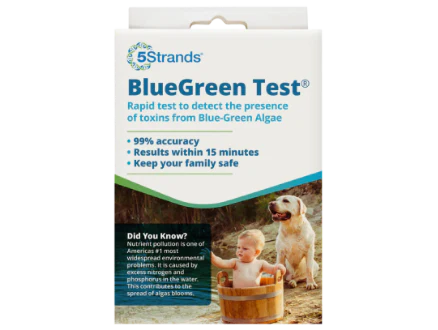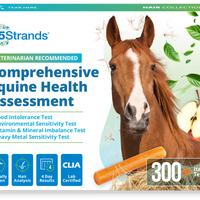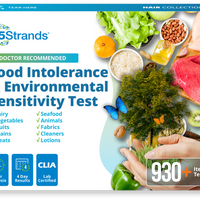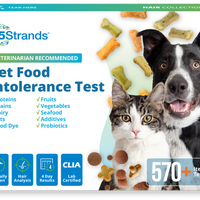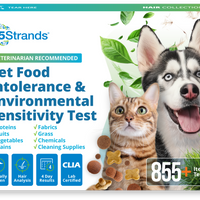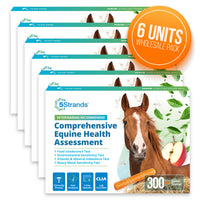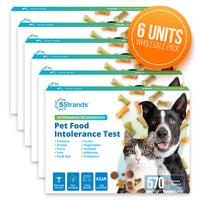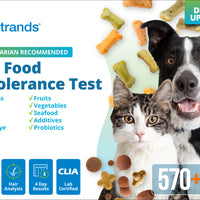Food cravings. Sometimes they seem to rule us, even when eating those very foods comes with energy loss and digestive consequences. In willpower moments, we vow to let those foods go and hours later find ourselves indulging back where we started.
Alas, our ability to abstain isn’t because we’re weak. There are other factors influencing our decisions. Here we’ll explore a sample platter of big craving instigators commonly blamed on poor willpower, and finally, a strategy to put them to rest.
For now, know that you are not alone, and being armed with insight behind the curtain of Oz, you may likely feel empowered to overcome the cycles of guilt from feeling manipulated by a meal.
The Physiology of a Craving

Sugar, Dopamine's Best Friend
Foods with combinations of sweet, salty, fatty, and chemically enhanced are labeled hyper-palatable due to their dramatic effects on the brain. Opiate-like endorphins including dopamine are released in the reward regions of the brain which create feelings of pleasure motivating us to eat those foods more often. The end result is a chemically reinforced habit. Sugar is incredibly talented at dopamine production, and when this brain chemical dips a craving arises simply to maintain dopamine levels.
How Insulin Keeps Us Reaching For More
Additionally, eating these easily digestible hyper-palatable combinations creates metabolic stress. Insulin is released to transport glucose into cells when excess sugar or carbohydrates are consumed. Later cortisol, a stress hormone, raises blood sugar from the insulin dip, creating inflammation and another craving. Over time, chronic blood sugar fluctuation can develop insulin resistance, the inability to properly absorb glucose. This can result in low blood sugar with symptoms of dizziness, headache, irritability, and fatigue. When this happens, the brain messaging prompting us to act on a quick digesting stabilizing option is powerful and further sold by feeling less optimal, therefore less motivated to prepare a healthy meal. The takeaway here is blood sugar imbalances can create habitual sensational sugar cravings and hyper-palatable foods, specifically, sugar is a big culprit! A bit of pre-meal planning with some go-to snacks can train the brain out of this rollercoaster.

Hungry Already? I Just Ate!
we are hungry, get confused by these hyper-palatable tasty combinations. One reaches for seconds sooner and eats significantly more than foods outside of sweet, salty, and fatty combinations. A person isn’t just fighting dopamine, blood sugar messages, and hunger signals, but lab-created flavor-enhancing chemicals designed to keep you buying and brand loyal.
Craving or Addiction?
What is the difference between a food craving and an addiction? Harvard’s nutrition department describes a craving as an intense desire, while addiction is one step further exhibiting a loss of control and repeated excess consumption. Although they don’t believe food cravings and addiction are biochemically the same as drugs or alcohol, they make these comparisons.
- Both trigger dopamine signaling reward regions of the brain.
- Both can require increasing amounts to achieve that reward due to tolerance.
- Both are difficult to quit due to hyperactive responses in the brain when a substance is present.
Notably, a food craving differs from an addiction in that it can also be caused by thirst, nutritional deficiency, boredom, and self-imposed food restrictions. Side note, thirst can manifest as a craving for concentrated carbohydrates. Try drinking 8-12 ounces of fresh filtered water, waiting 20 minutes and seeing if the craving persists.

Let’s Talk About the Blues in Relation to Cravings
In times of stress, it is natural to want to soothe by seeking food that brings a positive emotional response. We get it. Who doesn’t want to feel better as quickly as possible? Unfortunately, the effects are temporary, habit-forming, and addicting. Stress raises blood sugar, making the fulfillment of a sweet craving much more impactful on metabolic health. Chronically it can also lead to unwanted changes in digestion and persistent inflammation due to excess cortisol in the bloodstream. Sure, it’s often tolerable, but long term, it damages health. Consider activating happy hormones from socializing, loving a pet, exercising, and hobbies one truly enjoys. Let stress be the messenger of change.
If Depression is a reality, the gut likely needs the happy B’s. Beneficial gut bacteria are necessary for producing B vitamins which create neurotransmitters that regulate emotions including dopamine, serotonin, and GABA. Still, with the common prevalence of small intestinal bacterial overgrowth (SIBO) frequently, they are in lack. Specifically, B6 is necessary for making serotonin, and a lack of serotonin can result in a sugar craving. How do I know if I have SIBO? A doctor administers breath tests, but common symptoms are flatulence, belching, terrible breath, and bloating. The takeaway here is chronic stress and depression are friends with a compromised digestive system opening us up to a variety of craving messages.
Unfriendly Bugs & Irresistible Urges
Is it your craving or the bugs? An overgrowth of unfriendly bacteria, candida, and other parasites is common in compromised digestion. All feed off of and thus increase your desire for sugar and unhealthy foods creating feelings of being a puppet on a string.
A fascinating 2014 study links gut microbes to manipulating eating behavior by hijacking their host's nervous system. This occurs in hosts with weak vagal tone with less microbial diversity. Weak vagal tone is also associated with increased cravings and body weight.
Candida leads explicitly to feelings of out-of-control sugar cravings as sugar and carbs that break down as such are its primary food source. It causes more than just oral thrush and yeast infections, additionally polluting the blood, creating fatigue, inflammation, brain fog, food intolerances, low libido, and more.
According to the National Library of Medicine, parasites hijack your serotonin release, which controls appetite. The result is intense sugar cravings. These guys can also irritate and even perforate the intestinal lining causing undigested food to activate the immune response, causing both food and chemical sensitivities.
Poor bacteria diversity, candida, and parasites can all cause cravings, bowel issues, fatigue, skin irritations, and food and environmental sensitivities. They say all disease begins in the gut. Do you think it’s true?

Nutrient Deficiency
An irritated, out-of-balance gut environment can't support proper nutrient absorption. To keep the nasty bugs at bay and the lid on cravings, it’s essential to prioritize nutrient-dense, fiber-rich foods without food labels. Also, incorporating healthy saturated fats can help satisfy caloric needs and prevent cravings.
Food Intolerance and Its Role in Food Cravings
Poor digestive ability can result in food sensitivities/intolerances, which are now recognized as major causes of health conditions like eczema, bloating, and even depression. These issues can arise from a lack of enzymes, good bacteria, or an overgrowth of harmful invaders. Prominent picture causes can be an overuse of antibiotics, pesticides, and chemicals in food and water, as well as chronic stress.
Food intolerances and allergies are related but different. Inflammatory response hours to days after ingestion characterizes a food intolerance, while an allergy involves the immune system and can be immediate and even life-threatening.
Interestingly, despite the growing inflammation and digestive consequences, the brain can become addicted to the opiates released from an intolerance, even if it’s not hyper-palatable. Often, daily staple foods are culprits, and a break for a few weeks can decrease or eliminate the inflammatory response.

Okay, What Now?
We’ve learned that cravings are likely imbalances in the digestive system and can result from addictive chemicals, unwanted bugs, food intolerances, and more. Succumbing to these calls is not a personality flaw.
Whatever the cause, we give into food cravings because we want to feel better, and there are opiate-like rewards for doing so when hyper-palatable foods are involved. One solution is to source those chemicals for relief in other places. Easy come; easy go. When it comes to dopamine from food, our phones, and the tv, it allows us to disassociate, allowing the mind to ping pong ball to its next dopamine source.
The next time a craving arises, whether you act on it or not, sit with it for five minutes. Don’t scroll, eat, or engage in conversation, but make a concentrated effort to be present. This trains the brain to be more resilient to discomfort. One can then learn their go-to excuses and thought processes that push them to act or inadvertently face that problem. This is one tool to put you in the driver's seat again; couple it with these others.
Find Out What You’re Intolerant To.

At this point in life, one likely knows if they have a severe or life-threatening allergy. Save a trip to the doc getting poked with 80 needles of potential irritants and order a 5Strands Test. They use bioresonance technology, using your hair for a painless look at what’s irritating you. 5Strands tests for 190 environmental intolerances and 640 foods, including artificial dyes, sweeteners, and thickeners. They also test for 83 metal and nutrient imbalances. With this information, one can confidently know what works for their digestibility and the nutrients they might lack. These tests are sold individually or in a Comprehensive Sensitivity & Imbalance Test for just under USD 200. Likely you’ll need some new food choices to avoid inflammation-causing triggers. New to 5Strands is their integration with Sifter. This fabulous application considers your intolerances and makes product and food suggestions based on those results. Diet profiles are readily created to accommodate existing metabolic or health issues. Now that you know a personalized layout of what to eat, it’s time to meal plan.

Meal Plan for the Win!
Anylist is a game changer when it comes to this muscle. With a click of a button, upload recipes from your normal web browser, instructions, and all, then tap on specific ingredients to automatically add to your shopping list. This is a fun way to mix up meal diversity, habitually adding a new recipe each week and even rating in the app which ones you like best. The hardest part about this is remembering to meal plan once a week. Set a recurring reminder! A plus to this app is when an item runs out, and it’s added to the shopping list; your partner can open it at the grocery store and snag a couple of items without a powwow. Did I mention there is a calendar to plan your breakfast, lunch, and dinner meals as far as you like? You can even filter items by the grocery store. For example, I’m in Costco and don’t want to skim through all the produce and things I buy at another store. I choose the Costco filter, and my list is relevant and precise. The first time you add an item to the list, categorize it by store, and the next time you start typing the item, it will auto-populate your last setting. Genius right!?

Toss It, Or Lock it Away
You know what to eat, bought groceries, and have a meal plan that will decrease inflammation and make you feel more optimal each following week. You know those pleasure chemicals and cravings will take a few days, potentially a week, to find peace. During that time, it’s crucial to plan for moments of low willpower with healthier alternatives. Don’t give yourself a reason to feel guilty and continue unwanted patterns. It’s time to clean out your living space of sugars and the flavor enhanced until your system is in balance. By then, you likely won’t want it anymore.
This is a perfect time to get an accountability buddy online or with someone with a shared goal. Perhaps the people at home are ready to feel optimal too. Don’t fret if it’s not the case. Separate your go-to foods from their temptations. Designating a cupboard or space hidden away for their sweets and savories off your meal plan is a win. Some families have two refrigerators and separate cupboards for food storage. Allow others to prepare foods for themselves that don’t resonate with your healing process. It is an essential boundary for your overall health. Just because someone else isn’t on board doesn’t mean it’s your loss.

Healers Love to Help
By following the steps above, one can dramatically decrease their inflammatory load. Just by cutting out specific foods, it’s often enough to cause great relief. Other times we need more guidance on how to rebuild the digestive system. Many causes can manifest the same symptoms yet require different treatments. For example, fatigue can be caused by parasites, intolerances, candida, blood sugar dips, or stress, to name a couple. A targeted approach from an experienced natural health practitioner may be just the guidance and support one needs to feel optimal as soon as possible. If you’ve been struggling for a while, we hope you will find the information in this blog reaffirming it’s not just willpower, try our suggestions and find a fabulous healthcare practitioner to cheer you on in your corner.



